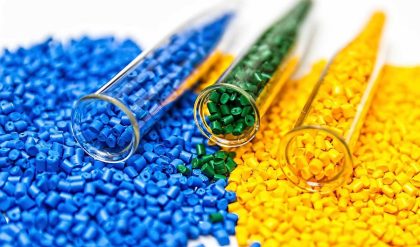Most of the polymers around us are made up of a hydrocarbon backbone. A Hydrocarbon backbone being a long chain of linked carbon and hydrogen atoms, possible due to the tetravalent nature of carbon.
A few examples of a hydrocarbon backbone polymer are polypropylene, polybutylene, polystyrene. Also, there are polymers which instead of carbon have other elements in its backbone. For example, Nylon, which contains nitrogen atoms in the repeated unit backbone.
Types of Polymers
On the basis of the type of the backbone chain, polymers can be divided into:
- Organic Polymers: Carbon backbone.
- Inorganic Polymers: Backbone constituted by elements other than carbon.

Types of Polymers
On the basis of their synthesis:
- Natural Polymers
- Synthetic Polymers
Biodegradable Polymers
The polymers which are degraded and decayed by microorganisms like bacteria are known as biodegradable polymers. These types of polymers are used in surgical bandages, capsule coatings and in surgery. For example, Poly hydroxybutyrate co vel [PHBV]
High-Temperature Polymers
These polymers are stable at high temperatures. Due to their high molecular weight, these are not destroyed even at very high temperatures. They are extensively used in the healthcare industries, for making sterilization equipment and in the manufacturing of heat and shock-resistant objects.
Few of the important polymers are:
Polypropylene: It is a type of polymer that softens beyond a specific temperature allowing it to be moulded and on cooling it solidifies. Due to its ability to be easily moulded into various shapes, it has a lot of applications.
A few of which are in stationary equipment’s, automotive components, reusable containers speakers and much more. Due to its relatively low energy surface, the polymer is fused with the welding process and not using glue.
Polyethene: It is the most common type of plastic found around us. Mostly used in packaging from plastic bags to plastic bottles. There are different types of polyethene but their common formula being (C2H4)n.
Properties of Polymers
Physical Properties
- As chain length and cross-linking increases the tensile strength of the polymer increases.
- Polymers do not melt, they change state from crystalline to semi-crystalline.
Chemical Properties
- Compared to conventional molecules with different side molecules, the polymer is enabled with hydrogen bonding and ionic bonding resulting in better cross-linking strength.
- Dipole-dipole bonding side chains enable the polymer for high flexibility.
- Polymers with Van der Waals forces linking chains are known to be weak, but give the polymer a low melting point.
Optical Properties
- Due to their ability to change their refractive index with temperature as in the case of PMMA and HEMA: MMA, they are used in lasers for applications in spectroscopy and analytical applications.
Some Polymers and their Monomers
- Polypropene, also known as polypropylene, is made up of monomer propene.
- Polystyrene is an aromatic polymer, naturally transparent, made up of monomer styrene.
- Polyvinyl chloride (PVC) is a plastic polymer made of monomer vinyl chloride.
- The urea-formaldehyde resin is a non-transparent plastic obtained by heating formaldehyde and urea.
- Glyptal is made up of monomers ethylene glycol and phthalic acid.
- Bakelite or polyoxybenzylmethylenglycolanhydride is a plastic which is made up of monomers phenol and aldehyde.
